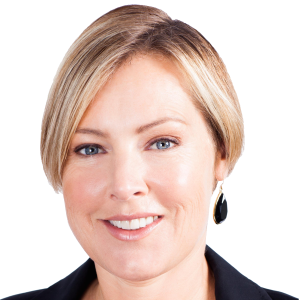Asset prices march to one unnerving beat

Roula Khalaf, Editor of the FT, selects her favourite stories in this weekly newsletter.
Two decades ago, hedge funds seemed omnipotent. Whenever there was a market shock or a cyclical turn in the economy, savvy traders such as George Soros or Julian Robertson jumped in — and often made a killing.
No longer. When turbulence hit global markets this summer, some of the best hedge fund gurus were hammered: the sector collectively lost $78bn in August. What is more striking is that this follows several years of below-par performance, in which many hedge funds have failed even to beat the US stock index.
Why? One reason is that hedge funds are operating in an increasingly crowded space. Another is that their neat computing models are being upended by the antics of (increasingly) capricious governments as they respond to crises with unconventional methods, such as quantitative easing.
For a third clue to why some hedge funds are suffering, take a look at a chart on page 22 of the latest International Monetary Fund financial stability report . This illustrates the recent level of global asset market “correlation” — or the degree to which the prices of seemingly unrelated major assets (most notably the S&P 500, emerging market equities and bonds, US Treasuries, high yield bonds and commodities) have moved in tandem in recent years.
Usually, this correlation — or “co-movement” in the jargon — does not grab too much public attention. Investors typically worry more about absolute asset price movements — is the stock market rising, say — not correlations. And national policymakers just fret about the assets sitting directly under their nose.
But, as the IMF chart shows, something rather bizarre is happening now. Between 1997 and 2007, the level of correlation between the major asset classes was around 45 per cent, roughly in line with historic norms. This means that markets occasionally swung in tandem with each other (say, during the crisis of 1998), but generally did not.
During the crisis of 2008-09, correlation jumped to 80 per cent. No surprise there: history shows that a crash is usually accompanied by high correlations as investors panic — and sell.
What is fascinating is the experience of the past five years. Since 2010, the sense of market crisis has ebbed and many asset prices have soared. But correlation has not fallen, as in the past; instead, it has averaged about 70 per cent, almost twice the pre-crisis level.
This is peculiar. Privately, IMF officials and western central bankers admit they are not entirely sure why this has occurred. One explanation is government intervention: the tide of liquidity supplied by central banks has been so overwhelming that it has lifted all asset price boats.
Another possible culprit is globalisation: not only is the “real” economy becoming more closely integrated, but the global asset management industry is more interlinked and concentrated. This matters. As Roger Lowenstein, the American author, noted two decades ago during the Asian financial crash, prices in seemingly unrelated asset classes can become tightly correlated simply because these assets are held by the same investors.
A third factor is that market liquidity has declined , partly because tighter regulations have forced banks to cut inventories of risky assets. This can fuel correlation as thin markets create more volatility, which can be contagious.
But some IMF officials think there is a fourth factor at work: derivatives. Previously, investors thought — or hoped — that derivatives should suppress correlation as they supposedly hedged risk. But preliminary (unpublished) IMF research suggests correlation in US equity markets actually rises when more equity futures are being used.
Which of these is the most important factor right now is unclear. I suspect it is a pernicious combination of all four. It is also unclear whether this pattern will last. But if it does, then investors need to take note — not least because it challenges many conventional asset management ideas.
After all, one reason why risk-loving hedge funds prided themselves on their ability to beat indices was that they jumped between different — uncorrelated — trades. Risk-averse, mainstreet investors also typically tried to avoid losses by diversifying between different, supposedly uncorrelated asset classes.
But if this 70 per cent level of correlation is here to stay, such guiding philosophies might need to be revised. The “new normal” for global asset prices might be contagion — good and bad. And that is unnerving; particularly at a time when emerging markets threaten to deliver new, synchronised risks.
Letters in response to this column:
Hedge funds are there for diversification / From Dino Sola
Hedge funds’ goal runs full cycle / From James Beadle
Inappropriate benchmark for most hedge funds / From Mark Fitzgerald
Comments